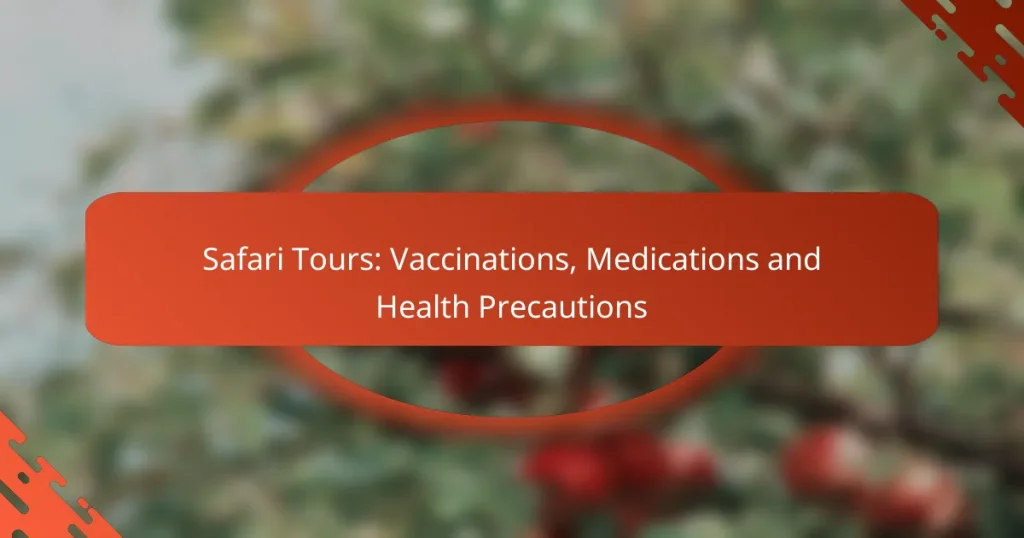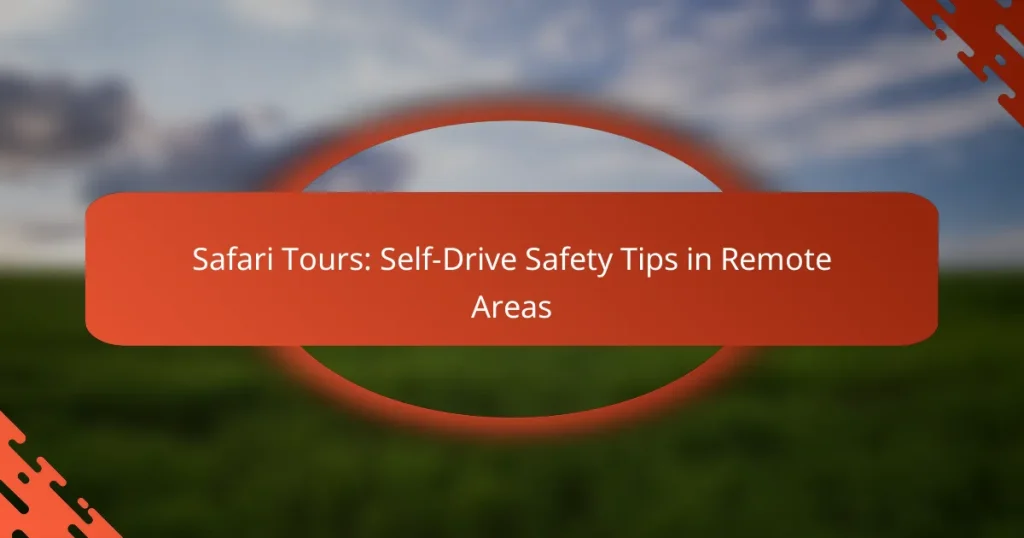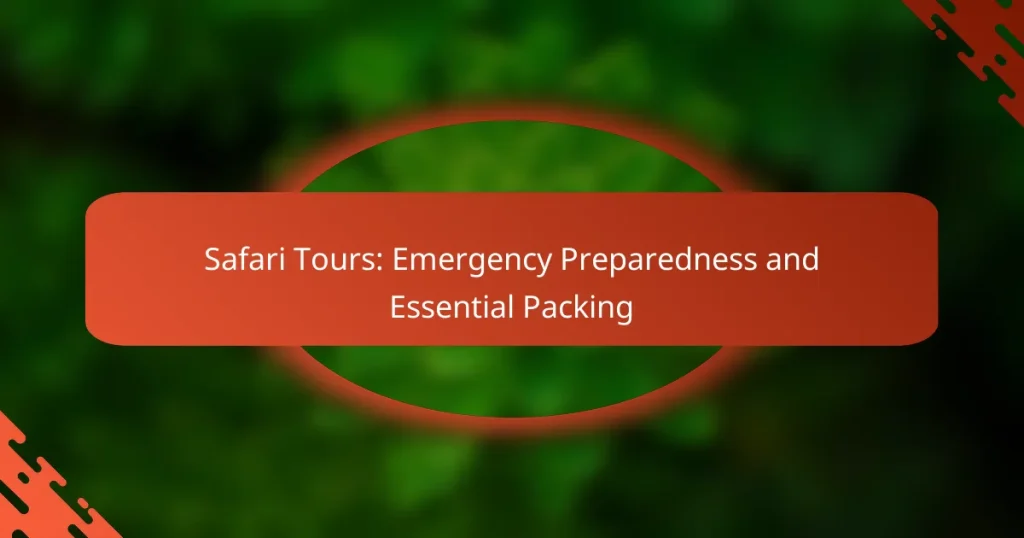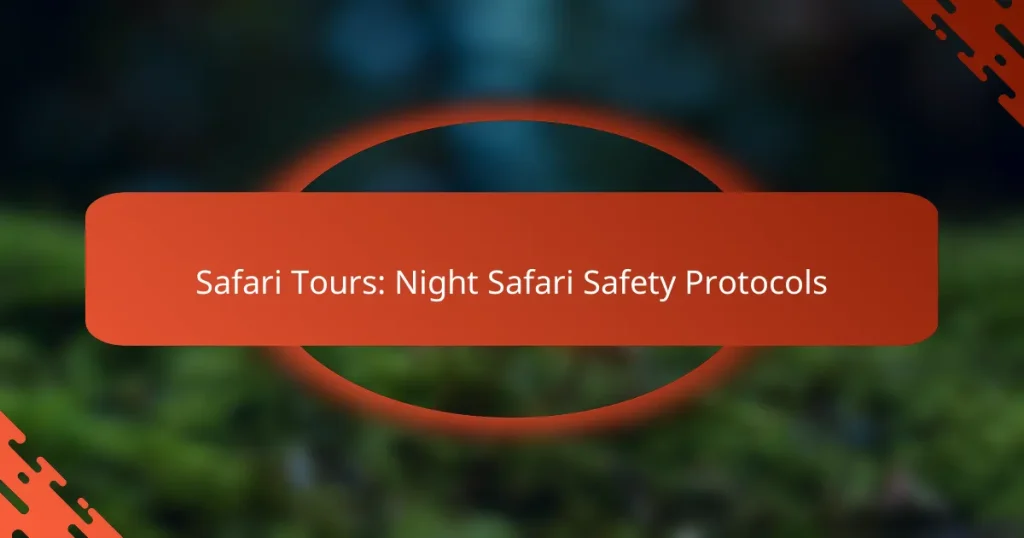Embarking on a safari tour can be an exhilarating experience, but safety should always be a top priority for travelers. By choosing reputable lodges, following guide instructions, and taking necessary precautions against wildlife and environmental hazards, you can ensure a memorable and secure adventure in the wild. Proper preparation, including health checks and travel insurance, further enhances your safety and enjoyment during this unique journey.
Safari Tours: Wildlife Behavior and Safety Strategies
Safari Tours: Pandemic Safety Considerations
Safari Tours: Wildlife Encounter Safety and Reaction Strategies
Safari Tours: Self-Drive Safety Tips in Remote Areas
Safari Tours: Emergency Preparedness and Essential Packing
Safari Tours: Night Safari Safety Protocols
What safety tips should travelers know for safari tours in Africa?
Travelers on safari tours in Africa should prioritize safety by staying informed and prepared. Key tips include choosing reputable lodges, following guide instructions, maintaining a safe distance from wildlife, using appropriate gear, and staying hydrated while protecting against sun exposure.
Stay in reputable lodges
Selecting reputable lodges is crucial for safety during safari tours. Look for accommodations with positive reviews, established safety protocols, and trained staff. Research lodges that are part of recognized associations, as they often adhere to higher safety standards.
Consider lodges that provide secure transportation and are located in safe areas. Avoid isolated or poorly reviewed options, as they may lack necessary safety measures or emergency protocols.
Follow guide instructions
Guides are trained professionals who understand the risks associated with wildlife encounters. Always adhere to their instructions, as they are designed to keep you safe. This includes staying close to the group and following specific protocols during wildlife sightings.
Ignoring guide advice can lead to dangerous situations. For example, approaching animals too closely can provoke aggression, while straying from the group may expose you to risks from wildlife or difficult terrain.
Keep a safe distance from wildlife
Maintaining a safe distance from wildlife is essential for both your safety and the animals’ well-being. Generally, a distance of at least 25 meters (82 feet) is recommended for larger animals like elephants and lions. For smaller animals, a distance of 10 meters (33 feet) is often sufficient.
Use binoculars or a camera with a zoom lens to observe wildlife without getting too close. This not only ensures your safety but also allows for more respectful wildlife viewing experiences.
Use proper gear and clothing
Wearing appropriate gear and clothing can significantly enhance your safety and comfort on safari. Opt for lightweight, breathable fabrics in neutral colors to blend into the environment and avoid attracting insects. Sturdy footwear is essential for walking safaris or uneven terrain.
Consider packing a wide-brimmed hat, sunglasses, and a light jacket for varying weather conditions. Additionally, bring insect repellent and sunscreen to protect against bites and sunburn.
Stay hydrated and protected from the sun
Staying hydrated is vital during safari tours, especially in hot climates. Drink plenty of water throughout the day, aiming for at least 2-3 liters (about half a gallon) depending on activity levels and weather conditions. Carry a refillable water bottle for convenience.
In addition to hydration, protect yourself from the sun’s harmful rays. Apply sunscreen with a high SPF regularly, and reapply after swimming or sweating. Seek shade during the hottest parts of the day to minimize sun exposure and reduce the risk of heat-related illnesses.
How can travelers prepare for a safari tour?
Travelers can prepare for a safari tour by researching their options, ensuring they meet health requirements, and securing appropriate travel insurance. These steps help ensure a safe and enjoyable experience in the wild.
Research safari companies
Choosing the right safari company is crucial for a successful tour. Look for companies with good reviews, experienced guides, and a commitment to safety and conservation. Compare packages, itineraries, and prices to find the best fit for your needs.
Consider reaching out to past customers or checking online travel forums for firsthand experiences. This can provide insights into the company’s reliability and the quality of their tours.
Check health and vaccination requirements
Before embarking on a safari, check the health and vaccination requirements for the countries you will visit. Common vaccinations may include those for yellow fever, hepatitis A, and typhoid, depending on the region.
Consult with a healthcare provider or travel clinic at least a month before your trip to ensure you have adequate time for vaccinations and any necessary medications, such as anti-malarials.
Pack essential travel insurance
Travel insurance is vital for any safari tour, covering unexpected events like trip cancellations, medical emergencies, or lost belongings. Look for a policy that includes coverage for adventure activities and emergency evacuation.
When selecting insurance, ensure it meets the specific needs of your safari, including coverage limits and exclusions. Review the policy details carefully to avoid surprises during your trip.
What are the common risks associated with safari tours?
Safari tours come with several risks that travelers should be aware of to ensure a safe experience. Common risks include wildlife encounters, insect bites and diseases, and vehicle accidents, each requiring specific precautions to mitigate potential dangers.
Wildlife encounters
Wildlife encounters can pose significant risks during safari tours, as animals may behave unpredictably. Travelers should maintain a safe distance from wildlife and follow the guidance of experienced guides who understand animal behavior.
It is crucial to remain in vehicles unless instructed otherwise, as this reduces the risk of direct encounters. Always be aware of your surroundings and avoid sudden movements that could startle animals.
Insect bites and diseases
Insect bites, particularly from mosquitoes, can lead to diseases such as malaria or dengue fever. Travelers should take preventive measures, including using insect repellent containing DEET and wearing long sleeves and pants during peak mosquito activity times.
Consider consulting a healthcare provider about vaccinations or medications before your trip, especially if traveling to areas where these diseases are prevalent. Staying in accommodations with proper screens or air conditioning can also help minimize exposure.
Vehicle accidents
Vehicle accidents are a potential risk on safari tours, often due to rough terrain or wildlife crossings. Always choose reputable tour operators that prioritize safety and have well-maintained vehicles suited for safari conditions.
Wearing seatbelts and following the driver’s instructions can significantly reduce the risk of injury. Be cautious of driving at night, as visibility is limited and animal activity increases, heightening the chances of accidents.
What should travelers do in case of an emergency during a safari?
In an emergency during a safari, travelers should remain calm and follow a clear plan to ensure their safety. This includes knowing how to contact local authorities and having essential supplies like a first aid kit readily available.
Contact local authorities
In case of an emergency, the first step is to contact local authorities, such as park rangers or law enforcement. Each safari destination typically has a specific emergency number, which can often be found in your travel documents or provided by your tour operator.
Be prepared to provide clear information about your location and the nature of the emergency. If you are in a remote area, GPS coordinates can be extremely helpful for quicker response times.
Have a first aid kit ready
A well-stocked first aid kit is essential for any safari. It should include basic supplies such as bandages, antiseptic wipes, pain relievers, and any personal medications. Consider including items for common safari-related injuries, like insect bites and minor cuts.
Regularly check your first aid kit to ensure that supplies are not expired and that you have everything you need. Familiarize yourself with how to use each item, and consider taking a basic first aid course before your trip to enhance your preparedness.
What are the best practices for photographing wildlife safely?
To photograph wildlife safely, maintain a respectful distance and prioritize the well-being of the animals. Use appropriate equipment and techniques to capture stunning images without disturbing their natural behavior.
Use a zoom lens
A zoom lens allows you to photograph wildlife from a safe distance, minimizing stress on the animals and reducing the risk of dangerous encounters. A lens with a focal length of at least 200mm is often recommended for wildlife photography.
When selecting a zoom lens, consider the aperture size as well. A wider aperture (like f/2.8 or f/4) can help in low-light conditions, allowing for clearer images without increasing ISO levels excessively. This is particularly useful during early morning or late afternoon when wildlife is most active.
Always check your camera settings before heading out. Ensure your shutter speed is fast enough to avoid motion blur, especially when photographing animals in motion. A good rule of thumb is to use a shutter speed that is at least the same as your lens’ focal length (e.g., 1/200s for a 200mm lens).






